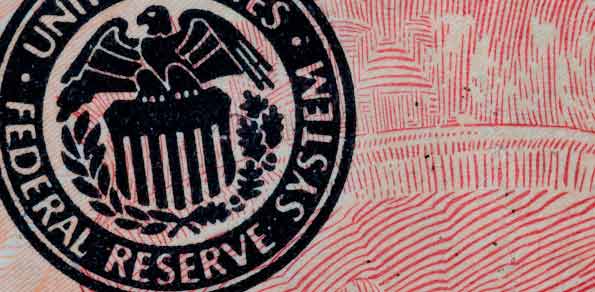The Federal Reserve Bank of New York will begin to question foreign banks for more thorough reports on their liquidity (and indirectly their solvency) as the U.S. steps up its risk monitoring of Europe’s sovereign debt crisis. Regulators have apparently held informal talks with the largest European lenders. The reports may cover potential liabilities such as foreign-exchange swaps and credit-default swaps.
U.S. prime money-market funds cut their exposure to eurozone bank deposits and commercial paper to $214 billion in August from $391 billion at the end of last year, according to JPMorgan Chase & Co. The funds are rationing their credit to European banks due to concerns that financial institutions will take huge losses if a eurozone nation (or nations) default. Credit-default swaps allow bondholders to buy protection against losses if an issuer defaults. The contracts entitle the holder to face value if the borrower defaults. Lawmakers and regulators have blamed misuse of the same swaps and lack of disclosure for helping to trigger the 2008 financial crisis.
A currency swap is a contract in which one party borrows one currency from another, and simultaneously lends another to the second party. Foreign-exchange swaps are used to raise foreign currencies for financial institutions and their customers, such as exporters and importers as well as investors. Currencies and their related derivatives are the most actively traded markets in the world, average daily turnover reached $4 trillion as of September 2010, the Bank for International Settlements estimated.
European finance ministers meeting in Luxembourg today are considering how to protect banks from the Euroland debt crisis and how to boost the region’s rescue fund. The Greek government approved €6.6 billion euros of austerity measures. The steps outlined by Prime Minister George Papandreou’s administration still leaves a 2012 budget deficit of 6.8 percent of GDP, missing the 6.5 percent goal previously set with the EU, International Monetary Fund and European Central Bank, known as the troika.
Dollar shows renewed strength
The US dollar beat stocks, bonds and commodities for the first time since May as investors sought refuge from slowing growth and Europe’s sovereign-debt crisis. The U.S. currency rose 6 percent in September, according to the Dollar Index. Raw materials measured by the Standard & Poor’s GSCI Total Return Index of 24 commodities slid 12 percent.
Dollar strength may indicate investor confidence in the nation’s creditworthiness after Standard & Poor’s stripped the U.S. of its AAA rating. The currency appreciated versus the sixteen of its most-traded counterparts in September for the first month in more than three years. However, it could be the liquidity of the dollar that investors are chasing as opposed to any real over riding confidence in the USA economy, if huge investors need to be nimble and divested the dollar represents the most obvious choice. The prevailing uncertainty over the extent of damage to the fragile European banking sector from a possible Greek default has been driving investors to take refuge in safer assets.
“In a time of crisis you want to be holding the most liquid currency out there,” Aroop Chatterjee, a currency strategist at Barclays Capital Inc. in New York, said in a telephone interview with Bloomberg on Sept. 27. Traders expect the dollar to strengthen against the euro, yen, pound, Swiss franc and Mexican peso, as well as the Australian, Canadian and New Zealand dollars, according to Commodity Futures Trading Commission data as compiled by Bloomberg. The dollar strengthened 0.8 percent versus the euro last week, extending its September advance versus the 17-nation currency to 6.8 percent, bringing its gain for the third quarter to 7.7 percent. The US dollar appreciated 0.6 percent versus yen in the five days ended Sept. 30, reducing its loss since June to 4.5 percent.
Market snapshot
Whilst Asian markets absorbed the positive news regarding the Greek government’s ratification the news that Greece would miss (by some distance) milestones weighed heavily. The market ‘group think’ could be that it’s inevitable that this next tranche of help, in the from of circa €8.8 billion, could be eaten up and Greece come back to the table for more echoing many commentators’ views that default is inevitable. The Nikkei closed down 1.78%, the Hang Seng closed down 4.38% and the CSI closed down 0.26%. The ASX closed down 2.78%, now 14.9% down year on year and the main Thai index closed down 4.88% to be down circa 10.56% year on year.
European markets have fallen sharply since opening, the STOXX is currently down 2.66%, the FTSE is down 2.41%, the CAC 2.71%, the DAX is down 2.91%. The SPX equity future is currently down 0.36%. Brent crude is down $92 a barrel and gold is up $33 an ounce. The euro has pared most of its losses since early morning to be flat versus the US dollar and has followed a similar pattern versus the Swissy, yen and sterling.
Data publications to be mindful of for NY opening and the session
With the London opening and session now in full swing it’s time to consider the data releases that may affect sentiment on or shortly after NY opens. There are only two major releases of importance from the USA today.
15:00 US – Construction Spending August
15:00 US – ISM Manufacturing September
Economists polled by Bloomberg predicted a change of -0.20% in construction spending compared to a previous figure of -1.30%. The ISM index can be a sentiment changer given it is considered to be the most important of all manufacturing indices. The ISM Manufacturing Index is liable to move markets, especially when periods of rapid economic growth are approaching the end of their cycle. As per the norm with many indices the ‘rubicon’ figure is considered to be 50, a survey of analysts compiled by Bloomberg showed a predicted figure of 50.5. This is slightly lower than last month’s figure of 50.6.






